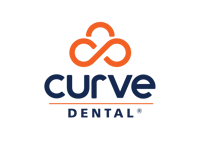The Complete Dental Treatment Plan Template: A Guide for Streamlined Patient Care

Running a successful dental practice requires more than just excellent clinical care. The way you communicate treatment plans to patients can make the difference between an accepted plan and one that never gets scheduled. For many practices, using a treatment plan template provides the structure, consistency, and clarity needed to ensure both patients and staff are aligned on the path forward.
In this guide, we’ll explore what a dental treatment plan template is, why it’s essential for both patient care and practice management, and how the right tools—like Curve Dental’s® all-in-one, cloud-based software—can help you streamline the process while improving patient satisfaction.
What Is a Dental Treatment Plan Template?
A dental treatment plan template is a standardized format used to document, present, and track a patient’s recommended treatment. Instead of starting from scratch with each new case, practices use a template that ensures all necessary details—such as procedures, costs, timelines, and responsibilities—are captured in a professional and patient-friendly manner.
Think of it as both a roadmap for the dental team and a communication tool for patients. By using a consistent structure, you reduce the chances of missed information, billing confusion, or miscommunication.
Why Treatment Plans Are More Than Paperwork
Many dental practices view treatment plans as paperwork or a compliance requirement. But in reality, treatment planning is a critical business process that impacts:
-
Case Acceptance Rates – A clear, well-structured plan helps patients understand the importance of recommended treatment, making them more likely to say yes.
-
Patient Trust – Transparency around costs, timelines, and expectations strengthens relationships.
-
Operational Efficiency – Standardized templates make it easier for staff to create and present treatment options quickly.
-
Revenue Cycle Management – Clear documentation helps with insurance claims, billing, and collections.
-
Patient Retention – When patients feel supported and informed, they are more likely to return and complete care.
In other words, the treatment plan is not just about dentistry—it’s about practice health and sustainability.
Key Elements of an Effective Dental Treatment Plan Template
A strong template should cover both the clinical and business sides of dentistry. While you may adapt yours to fit the unique needs of your practice, here are the core elements that should always be included:
1. Patient Information
-
Name, contact details, and demographic data
-
Insurance provider (if applicable)
-
Primary provider or assigned clinician
2. Clinical Findings
-
Summary of the exam results
-
Notation of any urgent or priority concerns
3. Recommended Treatment
-
Detailed list of proposed procedures
-
Sequencing of treatments (immediate vs. long-term)
-
Notes on alternatives, if appropriate
4. Cost Estimates
-
Procedure-by-procedure cost breakdown
-
Estimated insurance coverage
-
Patient’s out-of-pocket responsibility
5. Timeline and Appointments
-
Suggested schedule of visits
-
Total estimated treatment time
6. Patient Acknowledgement
-
Space for patient questions and notes
-
Signature line for acceptance
7. Staff Notes
-
Administrative or billing reminders
-
Follow-up actions for scheduling
Having these elements in a consistent template not only streamlines workflow but also ensures patients always leave with a clear, professional document they can refer back to.
The Benefits of Standardization in Dental Practices
Standardization is a powerful tool in dentistry. Just as clinical protocols ensure consistent care delivery, treatment plan templates standardize communication and administration. Here are some specific benefits:
Patient Notes
-
Clarity: Patients understand exactly what’s recommended and why.
-
Transparency: Costs are outlined clearly, preventing surprises.
-
Empowerment: They can make informed decisions about their care.
For the Dental Team
-
Efficiency: Templates save time during busy schedules.
-
Consistency: All providers follow the same communication standards.
-
Collaboration: Staff can easily pick up where others left off.
For the Dental Team
-
Improved Acceptance Rates: Better communication leads to more completed treatments.
-
Revenue Predictability: Clear cost and insurance breakdowns reduce billing disputes.
-
Staff Training: New employees quickly learn the system and replicate best practices.
Digital vs. Paper Treatment Plan Templates
Many practices still use paper forms for treatment plans. While these may feel simple, they often create challenges:
-
Limited customization
-
Difficulty storing and retrieving plans
-
Lack of integration with billing or scheduling systems
-
Potential for errors or lost paperwork
By contrast, digital templates within a cloud-based dental practice management system like Curve Dental offer significant advantages:
-
Plans can be generated instantly from patient records.
-
Information flows seamlessly to billing, insurance, and scheduling.
-
Templates can be customized for different types of treatment.
-
Plans can be emailed directly to patients for convenience.
-
Secure storage ensures compliance and easy access.
Moving to digital templates isn’t just about going paperless—it’s about building a more connected, efficient, and patient-friendly practice.
How Treatment Plan Templates Improve Case Acceptance
Case acceptance is one of the biggest challenges in dentistry. Even when patients know they need treatment, factors like cost, anxiety, or misunderstanding can prevent them from moving forward. Here’s how templates can help:
-
Simplify Complex Information – Breaking treatments into steps makes it less overwhelming.
-
Provide Clear Cost Estimates – Transparency around financials helps build trust.
-
Offer Multiple Options – Presenting phased plans or alternatives helps patients feel in control.
-
Support Visual Aids – Templates can include diagrams or integrate with digital imaging for clarity.
-
Enable Easy Follow-Up – If a patient doesn’t accept right away, staff can quickly revisit the documented plan.
In short, treatment plan templates transform a potentially stressful conversation into a clear, structured dialogue.
Building Patient-Centered Treatment Plans
A template is only effective if used with the right approach. Here are some best practices for presenting treatment plans in a patient-centered way:
-
Start with Listening – Ask about the patient’s concerns, priorities, and budget.
-
Use Plain Language – Avoid jargon; explain procedures in terms patients understand.
-
Highlight Benefits, Not Just Procedures – Focus on outcomes like improved health, confidence, or comfort.
-
Be Transparent About Costs – Patients value honesty and upfront discussions about affordability.
-
Encourage Questions – Leave space in the template for patient notes or concerns.
-
Provide Flexible Options – Use the template to outline phased or alternative treatments.
When templates are combined with empathetic communication, they become powerful tools for building trust.
Training Your Team to Use Templates Effectively
Even the best-designed template is only as effective as the team using it. Consider these training strategies:
-
Role-Playing: Practice presenting plans with staff to improve communication skills.
-
Consistency Across Providers: Ensure all dentists and hygienists follow the same structure.
-
Empower Administrative Staff: Train front desk and billing teams to explain financial portions clearly.
-
Continuous Feedback: Review case acceptance rates regularly and refine the approach.
The goal is to make treatment planning a team-driven process rather than a task that falls solely on the dentist.
Treatment Plan Templates and Insurance Integration
Insurance can complicate treatment planning. Patients want to know: What will my insurance cover, and what will I owe out of pocket?
Digital treatment plan templates integrated with your practice management system allow you to:
- Automatically calculate estimated insurance benefits.
- Show side-by-side comparisons of covered vs. non-covered services.
- Provide patients with realistic out-of-pocket costs.
- Reduce administrative follow-up and claim rework.
How Templates Support Multi-Location and Group Practices
For DSOs or multi-location practices, consistency is especially critical. Treatment plan templates ensure:
-
Patients receive the same quality of communication at every location.
-
Staff across sites follow standardized procedures.
-
Leadership can measure case acceptance rates across the organization.
-
Training and onboarding are streamlined for new hires.
Cloud-based systems make it possible for every location to access the same template, ensuring consistency at scale.
Work-Life Balance Through Streamlined Processes
It may not be obvious, but standardized treatment planning also contributes to work-life balance for dental teams. When workflows are streamlined:
-
Dentists spend less time re-explaining or re-documenting treatment.
-
Staff avoid stressful billing disputes.
-
Patients come to appointments prepared, reducing last-minute cancellations.
-
Overall efficiency reduces after-hours paperwork and burnout.
In short, templates free up time and energy—both of which are in short supply in busy practices.
Creating a Culture of Transparency and Trust
The use of treatment plan templates isn’t just about efficiency—it also reinforces a practice culture built on transparency. When patients consistently see clear, structured plans:
-
They learn to expect honesty and openness.
-
They are more likely to follow through with care.
-
They refer others to your practice.
This cultural shift benefits both patient satisfaction and long-term business growth.
Getting Started: Building or Adopting Your Template
If your practice doesn’t yet use treatment plan templates, here’s how to get started:
-
Assess Current Processes – How are you currently presenting treatment plans?
-
Gather Input – Ask your team what information would make the process smoother.
-
Design a Draft Template – Include the essential elements listed earlier.
-
Pilot the Template – Test it with a small group of patients and gather feedback.
-
Refine and Standardize – Make adjustments based on real-world use.
-
Digitize the Template – Implement it in a practice management system for maximum efficiency.
If you’re already a Curve Dental customer, much of this is simplified—the software includes integrated tools for creating, presenting, and managing treatment plans.
Conclusion: Treatment Plan Templates as a Foundation for Success
A dental treatment plan template is more than a form—it’s a cornerstone of patient communication, practice efficiency, and financial success. By standardizing the way treatment is documented and presented, you not only improve patient trust and case acceptance but also build a more resilient, efficient, and growth-oriented dental practice.
With the right technology in place—like Curve Dental’s cloud-based platform—you can take treatment planning to the next level, ensuring that every patient leaves with clarity, confidence, and a path toward better oral health.
*This content was partially generated by artificial intelligence. It may contain errors or inaccuracies, and should not be relied upon as a substitute for professional advice.

Curve Dental
Welcome to the official blog of Curve Dental. Serving up content about the team behind Curve Dental
